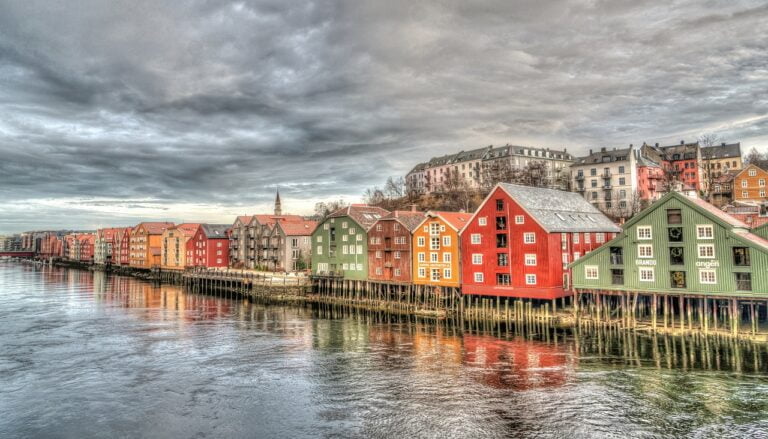What Is the Coldest Month in New Zealand?
In New Zealand, the coldest month is June, with average temperatures ranging from 8°C to 12°C (46°F to 54°F) nationwide. Overnight temperatures often dip below 0°C (32°F) in the South Island, making it the chilliest region. Frosty mornings are common, and most ski fields receive significant snowfall during this time. As the winter solstice approaches, days are shorter, and nights are longer. While June is the coldest month, the country's unique climate means there's more to discover about its winter landscapes, from frozen lakes to snow-capped mountains, and uncovering its secrets is just the beginning.
New Zealand's Climate Overview
New Zealand's geographic isolation and unique topography create a diverse climate, ranging from subtropical in the north to temperate in the south, with a complex interplay of oceanic and continental influences. The country's elongated shape, stretching from 34° to 47° south latitude, exposes it to varying amounts of solar radiation, resulting in distinct seasonal patterns. The prevailing westerly winds bring warmth and moisture from the Tasman Sea, while the Southern Alps create a rain shadow effect, resulting in a dry climate in the eastern regions. This unique combination of factors contributes to a dynamic climate, making New Zealand an attractive destination for outdoor enthusiasts and scientists alike. Understanding this complex climate is essential to grasping the country's temperature trends and patterns.
Winter Temperature Trends
What are the coldest months in New Zealand, and how do they shape the country's winter temperature trends? The answer lies in the months of June, July, and August, which typically experience the lowest temperatures nationwide. During this period, the average temperature ranges from 8°C to 12°C (46°F to 54°F), with overnight temperatures often dipping below 0°C (32°F) in the South Island. This temperature drop is attributed to the increased presence of Antarctic air masses and the lower angle of the sun during winter. As a result, winter temperature trends in New Zealand are characterized by crisp mornings, cool days, and occasional frosts, making it an ideal time for outdoor activities like skiing and snowboarding.
Regional Temperature Variations
While the winter months bring a uniform chill to the nation, regional temperature variations across New Zealand introduce a fascinating layer of complexity to the country's climate. The North Island, with its subtropical influences, tends to experience milder winters than the South Island. Coastal regions, such as Auckland and Wellington, benefit from the moderating effects of the ocean, resulting in relatively warmer temperatures. In contrast, inland areas, like Taupo and Rotorua, experience colder temperatures due to their distance from the coast. These regional variations are further accentuated by elevation, with higher-altitude areas, such as the Central Plateau, experiencing harsher winter conditions. Understanding these regional differences is essential for grasping the nuances of New Zealand's climate.
The Chilly South Island
How does the South Island's unique geography contribute to its reputation as the chilliest region in New Zealand? The island's mountainous terrain, dominated by the Southern Alps, creates a rain shadow effect that traps cold air from the Antarctic. This, combined with its higher latitude, results in lower average temperatures compared to the North Island. The South Island's proximity to the Antarctic Circumpolar Current also brings chilly winds and cold ocean currents, further cooling the region. As a result, areas like Queenstown, Wanaka, and Invercargill experience harsh winters, with frequent frosts and snowfall. The South Island's rugged landscape and harsh climate make it an adventurer's paradise, but also a region notorious for its biting cold.
Niwa's Climate Data Insights
According to Niwa's Climate Data Insights, New Zealand's temperature trends over the past century reveal a complex picture, with both warming and cooling patterns emerging across different regions. A closer examination of the data reveals distinct regional variations, with some areas experiencing more pronounced temperature fluctuations than others. By analyzing these climate trends and regional differences, we can gain a deeper understanding of the country's coldest month.
Climate Trends Revealed
New Zealand's climate trends have been laid bare through Niwa's exhaustive analysis of climate data, revealing a complex tapestry of warming and cooling patterns across the country. The data highlights a notable warming trend, with temperatures rising by approximately 1°C over the past century. This upward trend is most pronounced in winter and spring, with average temperatures increasing by around 1.5°C during these seasons. Conversely, summer temperatures have shown a slight cooling trend, particularly in the north. These trends are influenced by various climate drivers, including El Niño and La Niña events, which have significant impacts on New Zealand's climate. Understanding these trends is vital for informing climate-sensitive decision-making and mitigating the impacts of climate change.
Regional Variations Exist
Regional climate patterns in New Zealand exhibit distinct variations, with Niwa's climate data insights revealing that some areas are warming rapidly while others are experiencing little change. The country's diverse geography and latitude contribute to these regional differences. The South Island's southern regions, such as Invercargill and Queenstown, are among the coldest areas, with average temperatures ranging from 4°C to 8°C during the coldest month. In contrast, the northern regions of the North Island, like Auckland and Northland, tend to be warmer, with average temperatures between 12°C and 15°C during the same period. These regional variations are essential for understanding New Zealand's climate and planning for the future.
Average Temperature by Month
As we delve into the average temperature by month in New Zealand, a distinct pattern emerges. The country's climate is characterized by a pronounced winter chill, a gradual spring warm-up, and a steady autumnal cooldown. These seasonal fluctuations are vital in understanding the country's coldest month, and we'll examine each phase in turn, starting with winter's chilly peak.
Winter's Chilly Peak
July's frigid grip holds the nation in its chill, boasting the lowest average temperature of the year at a brisk 8.8°C (47.8°F). As winter's peak, July brings frosty mornings, icy winds, and limited sunlight, making it the coldest month in New Zealand. The average temperature drops to 7.3°C (45.1°F) in the South Island, while the North Island experiences a relatively milder 9.4°C (48.9°F). The mercury plummets further in the mountains, with some areas dipping below 0°C (32°F). The cold weather patterns dominate the month, making July the perfect time for skiing, snowboarding, and other winter sports. As the nation shivers, New Zealand's winter wonderland comes alive, offering a unique and invigorating experience for those who brave the chill.
Spring's Slow Rise
As the frosty grip of winter slowly loosens, average temperatures begin their gradual ascent, with August and September experiencing a modest uptick to 9.5°C (49.1°F) and 10.5°C (50.9°F), respectively. This marks the beginning of spring, a season of transformation and renewal.
Here are some key temperature milestones during spring in New Zealand:
- October: 11.5°C (52.7°F), a noticeable increase from the previous month.
- November: 12.5°C (54.5°F), as the country starts to shake off its winter chill.
- December: 13.5°C (56.3°F), the highest average temperature of the spring season.
- Spring average: 11.2°C (52.2°F), a significant rise from winter's average of 8.4°C (47.1°F).
As spring progresses, the temperatures continue to rise, paving the way for a warmer and more vibrant season ahead.
Autumn's Steady Cool
Following the gentle warmth of spring, autumn arrives in New Zealand, bringing with it a gradual cooling trend, with average temperatures steadily decreasing month by month. March, the first month of autumn, sees average temperatures ranging from 12°C to 18°C (54°F to 64°F) across the country. April's temperatures dip slightly, averaging between 10°C to 16°C (50°F to 61°F), while May's temperatures drop further, ranging from 8°C to 14°C (46°F to 57°F). This steady cool-down marks a significant shift in New Zealand's climate, as the country moves from the warmth of spring to the chill of winter.
The Coldest Month Revealed
New Zealand's chilliest month is June, when the average temperature drops to a brisk 9°C (48°F) nationwide. During this time, the country experiences a significant drop in temperature, making it the perfect excuse to cozy up with a warm cup of coffee or a good book.
- Frosty Mornings: Expect frosty mornings, especially in the South Island, where temperatures can drop as low as -2°C (28°F).
- Snowfall: June is a great time to hit the slopes, with most ski fields receiving significant snowfall.
- Shorter Days: With the winter solstice approaching, days are shorter, and nights are longer.
- Winter Wonderland: June is a great time to discover New Zealand's winter landscapes, from frozen lakes to snow-capped mountains.
Winter Weather Tips for Kiwis
While embracing the chill of New Zealand's coldest month, it's crucial to be prepared for the winter weather that comes with it. As Kiwis, it's essential to take necessary precautions to stay safe and warm during this time. Start by insulating your home, sealing any gaps, and using thick curtains to keep the cold out. Stock up on warm clothing, including layers, hats, and gloves, and invest in a good quality raincoat. Don't forget to check your vehicle's maintenance, including the battery, oil, and tyres, to safeguard it against winter's harsh conditions. Finally, stay informed about weather forecasts and road conditions to avoid any unexpected surprises. By following these winter weather tips, you'll be well-equipped to tackle the cold and make the most of New Zealand's winter wonderland.


